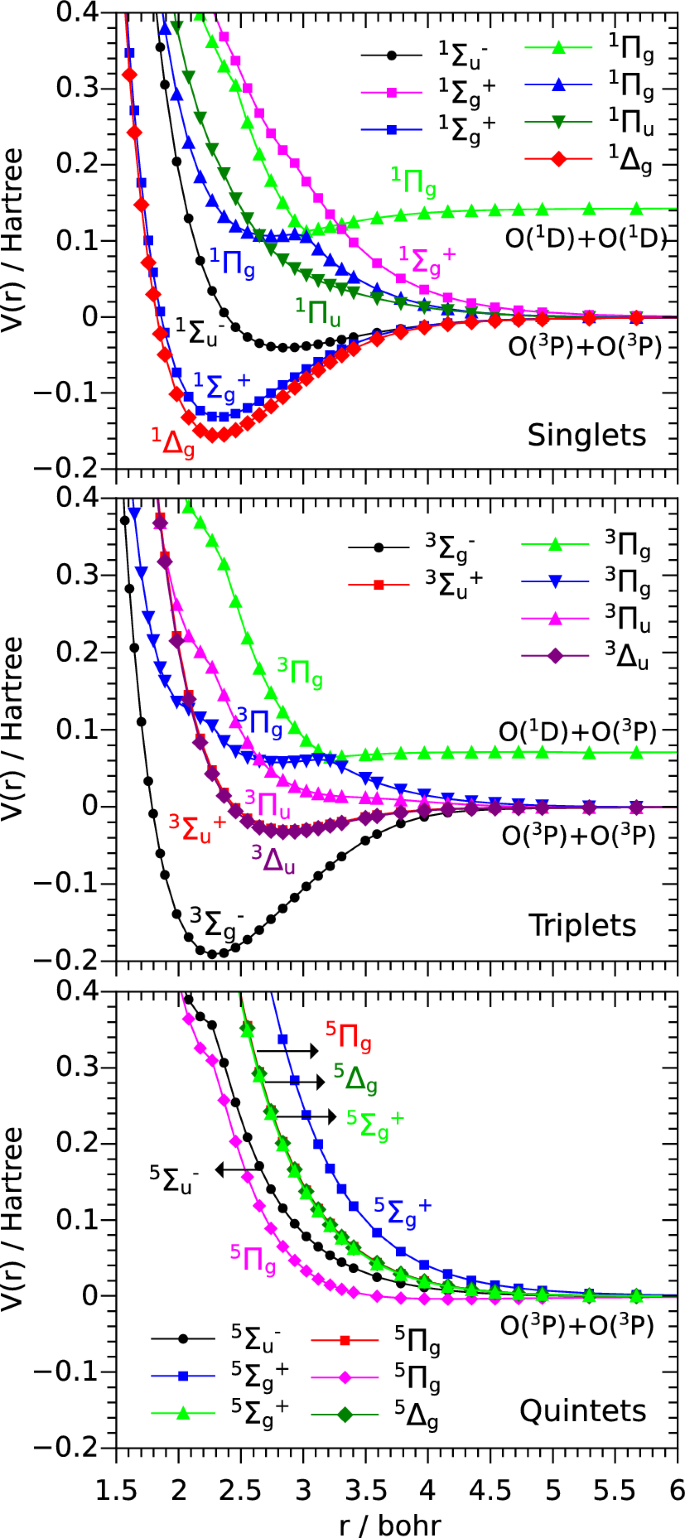Transport Cross Sections and Collision Integrals for O(\(^{3}\)P)–O(\(^{3}\)P) Interaction
IF 2.6
3区 物理与天体物理
Q3 ENGINEERING, CHEMICAL
引用次数: 0
Abstract
New collision integrals and transport cross sections for O(\(^{3}\)P)–O(\(^{3}\)P) interaction are reported in the 300–30000 K range. Those values are based on a new set of potential energy curves (PECs) calculated with the multireference configuration interaction method. The results of the classical and semiclassical WKB (Wentzel–Kramers–Brillouin) methods are compared, excellent performance of the classical approach is shown (discrepancy much lower than 1% even at room temperature). In particular, the classical and WKB methods agree very well for the repulsive potentials effectively reducing overall uncertainty.

O( $$^{3}$ P)-O( $$^{3}$ P)相互作用的输运截面和碰撞积分
报告了300-30000 K范围内O(\(^{3}\)P)-O(\(^{3}\)P)相互作用的新碰撞积分和传输截面。这些数值是基于用多参量构型相互作用方法计算的一组新的势能曲线(PECs)得出的。对经典方法和半经典 WKB(Wentzel-Kramers-Brillouin)方法的结果进行了比较,结果表明经典方法具有卓越的性能(即使在室温下,差异也远远低于 1%)。特别是,经典方法和 WKB 方法在斥力势方面非常一致,有效地减少了总体不确定性。
本文章由计算机程序翻译,如有差异,请以英文原文为准。
求助全文
约1分钟内获得全文
求助全文
来源期刊

Plasma Chemistry and Plasma Processing
工程技术-工程:化工
CiteScore
5.90
自引率
8.30%
发文量
73
审稿时长
6-12 weeks
期刊介绍:
Publishing original papers on fundamental and applied research in plasma chemistry and plasma processing, the scope of this journal includes processing plasmas ranging from non-thermal plasmas to thermal plasmas, and fundamental plasma studies as well as studies of specific plasma applications. Such applications include but are not limited to plasma catalysis, environmental processing including treatment of liquids and gases, biological applications of plasmas including plasma medicine and agriculture, surface modification and deposition, powder and nanostructure synthesis, energy applications including plasma combustion and reforming, resource recovery, coupling of plasmas and electrochemistry, and plasma etching. Studies of chemical kinetics in plasmas, and the interactions of plasmas with surfaces are also solicited. It is essential that submissions include substantial consideration of the role of the plasma, for example, the relevant plasma chemistry, plasma physics or plasma–surface interactions; manuscripts that consider solely the properties of materials or substances processed using a plasma are not within the journal’s scope.
 求助内容:
求助内容: 应助结果提醒方式:
应助结果提醒方式:


